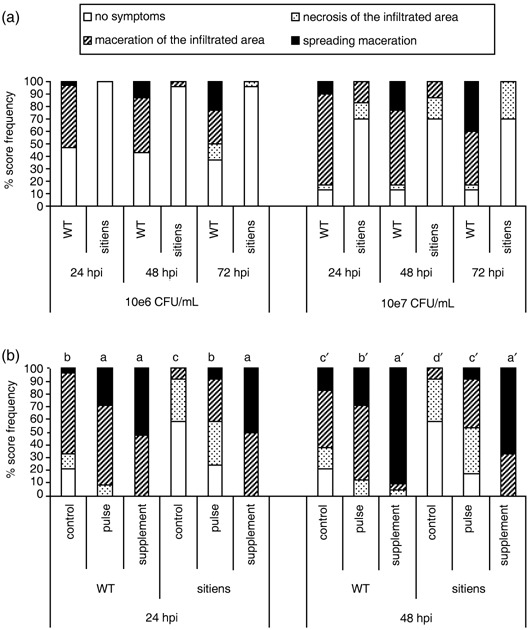Figure 2.

Effect of abscisic acid (ABA) on E. chrysanthemi disease symptoms on tomato. (a) Disease progression at 24, 48 and 72 hpi on sitiens and WT tomato, grown under conditions of high temperature (28 °C) and high relative humidity (100%), and infiltrated with 106 or 107 CFU E. chrysanthemi/mL. At all time points and for both inoculum concentrations, disease development was significantly lower in sitiens than in the WT parent at P = 0.05. (b) Effect of different exogenous ABA treatments on sitiens and WT susceptibility to E. chrysanthemi. Plants were sprayed with 100 µm ABA at 3‐ to 4‐day intervals for 2 weeks (physiological supplementation—‘supplement’ treatment) or 4 h before inoculation (‘pulse’ treatment) and infiltrated with 107 CFU/mL. Bars with different letters indicate a significant difference between the treatments at P = 0.05. Disease development was evaluated and data analysed by the Kruskal–Wallis/Mann–Whitney non‐parametric test. At least eight plants per genotype–treatment combination were used and on each plant, disease was evaluated on three infiltrated leaflets of the same leaf. For (a) and for (b), similar results were obtained in at least three independent experiments. Data of one representative experiment are presented.
